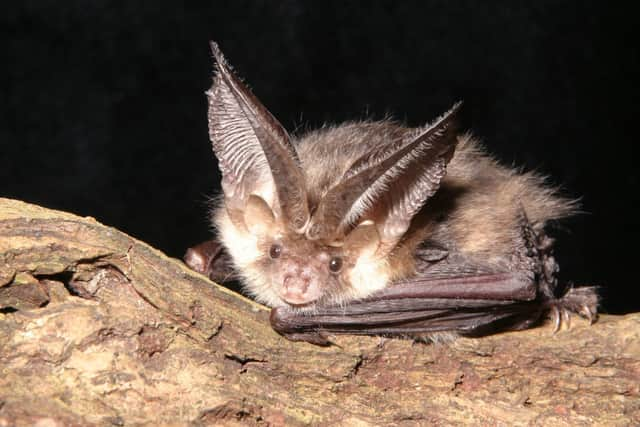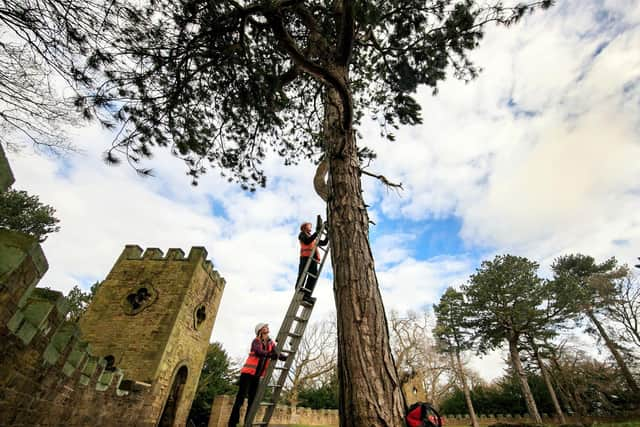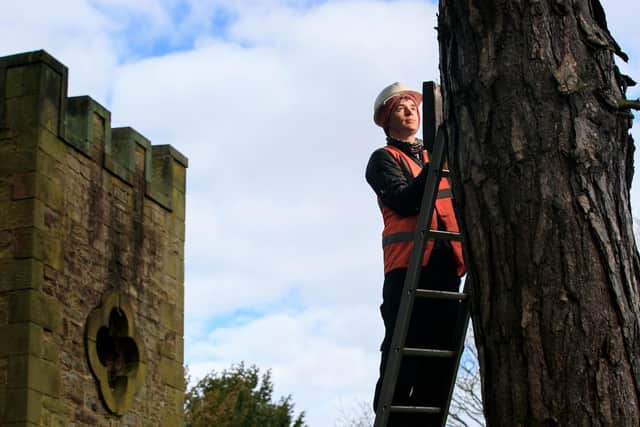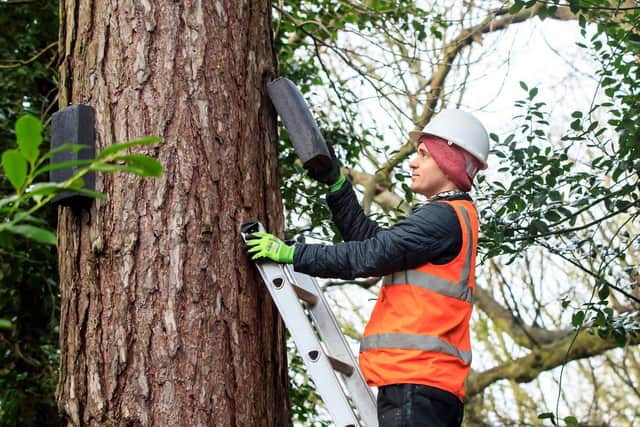Hundreds of bats in a fake castle in South Yorkshire secure bright future
Painted in popular culture as an evil, bloodsucking monster, Count Dracula’s alter-ego, and a harbinger of death - few creatures are as vilified as the bat.
But in reality the furry winged creatures are friends of the earth as they play a crucial role in sustaining the ecological balance of many environments around the world.


Advertisement
Hide AdAdvertisement
Hide AdIn South Yorkshire conservation work on an 18th century fake castle is being coordinated to support hundreds of its resident bats.
Work began earlier this year on restoring the turret of the Grade II listed Stainborough Castle in Wentworth Castle Gardens, near Barnsley, South Yorkshire.
The National Trust, which cares for the site jointly with Barnsley Council, says the work is being carefully coordinated to minimise the impact on the castle’s resident colony of bats.
Specialist bat boxes have been erected for the four residing species and a dedicated ecologist is at the castle each day to ensure the creatures are not disturbed.


Advertisement
Hide AdAdvertisement
Hide AdRobert Bell, principal ecologist advising the project, said: "Stainborough Castle is used by bats all year round.
"The castle surroundings offer an abundance of eating options and offer the bats lots of different dark and dry places to rest up within."
He added: “We would risk causing a local decline in the population if they ran out of suitable roost locations."
Currently three boxes have been installed to protect the brown long-eared bat, noctule, common pipistrelle and Natterer’s bat species, which use resting places (roosts) within the castle.


Advertisement
Hide AdAdvertisement
Hide AdMr Bell, 38, said: “All bat resting places within the castle will either be kept or re-created.
"We are going to great lengths with the hope that we will protect all the features that make the castle great for bats long into the future.”
For the future of the bat colony at Wentworth Castle Gardens it is hoped the bat box scheme is scaled up and future bats walking tours put in place.
“They are misunderstood - there is a lot of folklore surrounding them and a lot of negative associations," said Mr Bell, who also works with homeowners across South Yorkshire who have found a bat on their properties.


Advertisement
Hide AdAdvertisement
Hide AdHe added "In truth they are genuinely fascinating little animals that kind of live under our noses half the time and we just don’t know they are there."
The work on the castle is expected to last around five months.
Work is funded by Barnsley Council is part of a programme of works to improve the condition of the site, as part of the National Trust's 25-year partnership lease with the council.
Coun Tim Cheetham, from Barnsley Council, said: “Wentworth Castle Gardens is a beautiful place to visit and it’s wonderful to have it right here on our doorstep in Barnsley.
Advertisement
Hide AdAdvertisement
Hide Ad"The conservation work taking place on the folly castle will have a positive impact on visitors for years to come.
"Through partnership working with the National Trust and Northern College we are securing a sustainable future for the well-loved visitor attraction.”
Stainborough Castle is a fake castle built by Thomas Wentworth in 1708 to impress his friends and visitors following a feud with family members at the nearby stately home, Wentworth Woodhouse.
It was built to give the impression that it had been in his family for generations, rather than a new addition at the time.
Advertisement
Hide AdAdvertisement
Hide AdOnly one half of the castle front still stands as the other turret was lost when the estate fell into disrepair at the turn of the last century.
__________
Support The Yorkshire Post and become a subscriber today.
Your subscription will help us to continue to bring quality news to the people of Yorkshire. In return, you'll see fewer ads on site, get free access to our app and receive exclusive members-only offers. Click here to subscribe.